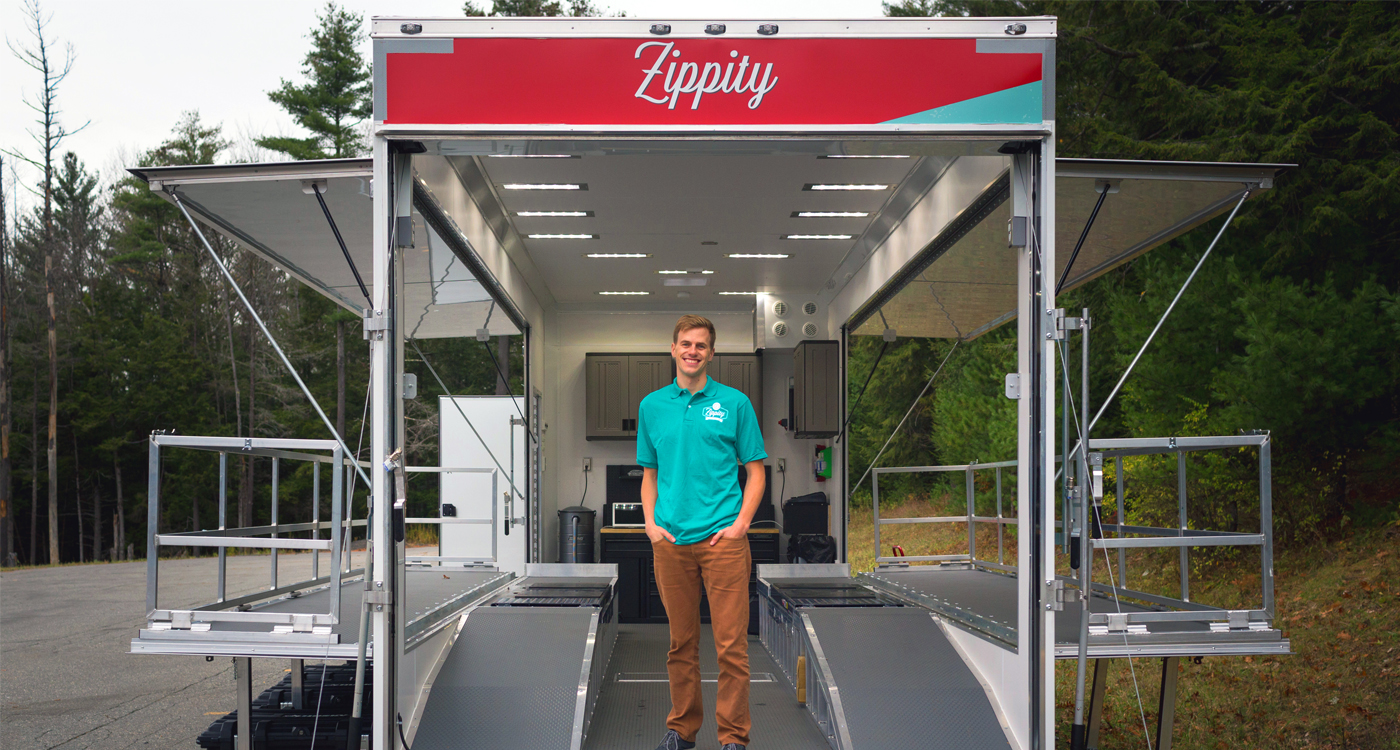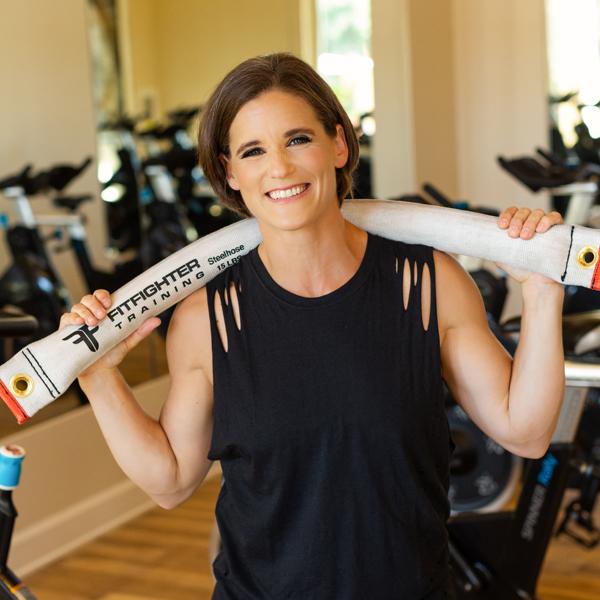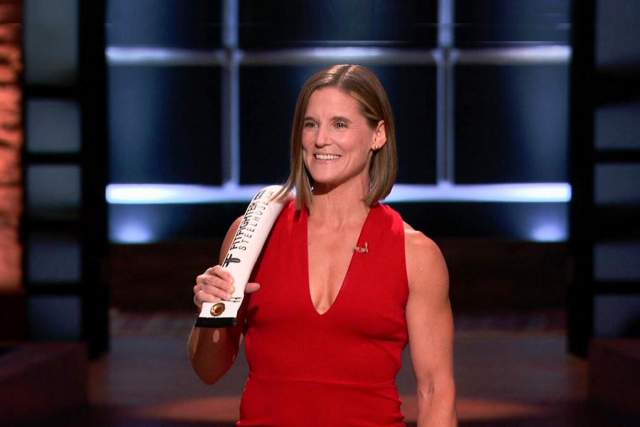Tuck Alumni Share Startup Journeys at PEVC Conference
Four alumni founders provide their unique perspective on pathways and hurdles to their startup success.

While a student at Tuck, Ed Warren T’17 co-founded Zippity, a mobile mechanic shop and detailer on wheels.
Last week, Tuck hosted the 16th annual Private Equity and Venture Capital Conference, a five-day event filled with virtual keynote addresses, fireside chats, learning sessions, and panel discussions.
Hosted by the Tuck Center for Private Equity & Venture Capital, the conference's speakers included such luminaries as Philipp Hildebrand, vice chair of BlackRock; Adena Friedman, president and CEO of NASDAQ; and Roger McNamee T’82, co-founder of Elevation Partners. There were panel discussions ranging from gender diversity in PE and VC to growth equity and investing in infrastructure and real assets.
The conference also covered entrepreneurship, with panels on minorities in VC and entrepreneurship—from both the entrepreneur’s and the venture capitalist’s perspectives. Scores of Tuck alumni have founded successful companies, and on the last day of the conference four recent alumni founders talked with Robert Sewell T’21—himself a founder of a solar hardware startup—about their startup journeys and some challenges along the way.
The panel featured:
- Sarah Apgar T'11, Founder, FitFighter
- Andrew Olaleye T'13, Co-Founder, ChatDesk
- Ed Warren T'17, Founder, Zippity
- Ross Klosterman T’20, MPH’20, Co-Founder, UnifiHealth
Here are some highlights from their conversation:

FitFighter founder and CEO Sarah Apgar T’11 recently received a deal on ABC’s “SharkTank” for her business.
On their pathway to entrepreneurship…
Apgar Coming out of Tuck, I was looking for an early-stage company that was mission driven. I wanted to be a leader on project-based work, to realize specific accomplishments with clear success and failure. I landed at Warby Parker, leading a team building new stores and facilities. I had lots of responsibility very quickly. Going in with that focus helped solidify my position as an executive and I stayed there for almost five years. My advice is to be very focused on the type of experience you want to have if you are a budding entrepreneur and ultimately know that you want to start and run your own company.
Olaleye I came into Tuck wanting to focus on manufacturing and consumer goods and emerging markets. I was focused on moving to Africa right after graduating. I was fortunate to find an opportunity at McKinsey that allowed me to cover sub-Saharan Africa, Europe and the Middle East and work on complex problems in a way that I was learning everyday about so many different sectors. I wanted to learn the nuances of influencing and persuading people. I think what’s so underrated in business school is the ability to understand sales, listening to people. I took a lot of those skills out of my McKinsey experience. When I’m selling to companies today, I’m trying to understand their biggest pain points and how our software provides value to them.
My advice is to be very focused on the type of experience you want to have if you are a budding entrepreneur and ultimately know that you want to start and run your own company.
Sarah Apgar T'11
On their experience as student founders…
Klosterman I came into Tuck knowing from day one that I wanted to do something very close to what UnifiHealth is now. That was informed by my prior work at Athena. I took pretty much every entrepreneurship class or program offered by Tuck and had great mentorship from Daniella Reichstetter, Suzie Rubin, Jim Feuille, Caroline Cannon, Mike Zubkoff and a number of others. That was helpful for us in refining our pitch and story and really evolve to what our business model is today.
Warren Before Tuck, I was in the military and worked at a late-stage startup and learned enough to know I wanted to do something entrepreneurial. That helped me have a focused approach to take advantage of the Tuck entrepreneurship resources. We had unbelievable support at Tuck for Zippity. Our classmates pitched in. At one point we were cleaning classmates’ cars between classes as our FYP. We started doing competitions, getting initial interest for fundraising. The coursework and community were critical in getting me on a path to launch this.
On what it was like to raise capital virtually, during the pandemic…
Klosterman We had 25 different versions of our pitch deck. But once we got the story down and practiced a lot through pitch competitions, and getting feedback, what made the difference was really sitting down with folks who had the relevant background. And this is where a lot of the mentorship came in as to how you target the investors. What led to our success in raising the round that we did is that we were very deliberate around who we built relationships with, who we thought would want to talk with us. Pitching over Zoom, we couldn’t really get through it in 30 minutes. We had over 100 hour-long conversations, including preparation and follow-ups. Whether it’s a Zoom environment or not, what will ultimately allow you to push forward is finding those one or two right individuals or right funds who have the right background, who believe in the team and get the vision and have the ability to write a check. It was a five- or six-month experience, start to finish.
On fundraising at Tuck and beyond…
Warren Our vision was car care needs to be transformed and there’s a customer-centric way to do it. The actual solution has transformed dramatically over the last few years. We started with angel investors from the Tuck community—one of our pitches in the Building Entrepreneurial Ventures course led to our first investor, who is a Tuck alumnus. You need to be really strategic about matching your funding path with your business model. It can be tempting to take money if it’s there. You have to think really carefully about the cash necessary for the business, and think about how it’s going to grow and then match that to the funding.
Investors want to know you understand the business; that you’re working on a big problem in a space that can be really big for them.
Andrew Olaleye T'13
On looking for investors
Olaleye We were looking for someone who really believed in our vision. We are trying to tackle a huge problem in the customer support world, and we wanted to make sure our investors really believed in us. Also, we wanted someone who wouldn’t want to check-in every week, but when we needed them they would take time away to talk, and open their network.
Apgar There are two important points here. First, who do you want that strategic investor to be on a day-to-day or week-to-week basis? The only thing that matters is: who are you as a founder and how are you going to engage with this investor? And second: what does the company need in that partner, when it comes to their money, their engagement, their network, their expertise? I think this is the fundamental question. You need to be doggedly committed to understanding who you’re talking to, and who they will be for you.
On the difference between seed round funding and series-A funding…
Olaleye When we started having discussions around seed fundraising, we had close to $100,000 in revenue and a product that had customers but we were still trying to figure it out. Now, we’re approaching $1 million in annual revenue, we have a sense of who our customer base is, and we get a lot of great feedback from them. The difference between raising a seed and series-A is that with seed fundraising, it’s really about the team. Investors want to know you understand the business; that you’re working on a big problem in a space that can be really big for them. My co-founder spent seven years at Google as a product manager focused on machine learning with the Google Assistant. I spent four-plus years focused on digital operations and actually working with call centers. We knew the space very well. Fast forward a few years, as we prepare for conversations around our series-A, it’s really about how we have executed. How have you been able to grow month-over-month? Let’s see your cost of acquisition. Are you able to keep your customers? Is your margin shrinking or growing? They’ve seen we can take our business to $1 million; now they want to know if we can take it to $10 million or $100 million.
I would say: pick a north star and make sure the whole company knows what that is. Have all-hands meetings, get the board aligned, make the mission really clear. And then have relentless focus.
Ed Warren T'17
On scaling up…
Apgar Understand the phase your company is in. You’ve brought that capital into the company, and now it’s time to go from whatever chapter you were in before and be explicit about moving into the next chapter, which has new needs — for personnel, systems and operations, manufacturing, technology, etc. The moment you know that capital is coming in, you should know what those needs are. For me, that started when I was thinking about my limitations as a founder and CEO. I’ve had 18 years of professional experience in a number of roles, so I know myself and know who I need as a strategic partner in a COO, CMO, CTO. I’m bringing on a COO, and hiring five more people.
On transforming a business in 2020…
Warren The pandemic forced us to make decisions we perhaps should have made even sooner. Our primary business model, workplace service delivery of mobile car care, was completely devastated by the pandemic because people stopped going to work. We had to make a bunch of decisions and we ended up making big ones. We didn’t just say, Let’s add home service. We said, Let’s add home service and take this tech platform we’ve been building and let’s be the best tech stack for mobile automotive in the world. That was an enormous change, and meant we had to execute on a lot in a very short amount of time, with not a lot of capital. I would say: pick a north star and make sure the whole company knows what that is. Have all-hands meetings, get the board aligned, make the mission really clear. And then have relentless focus. We had 75 variations of things we could do; we had to say, “No, we’re sticking with this vision because we have one shot at this.”

